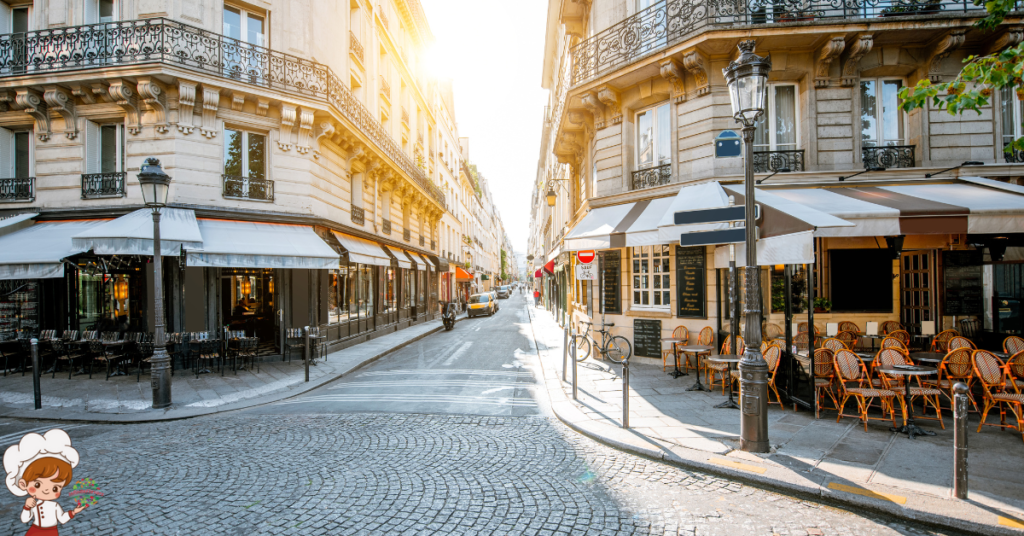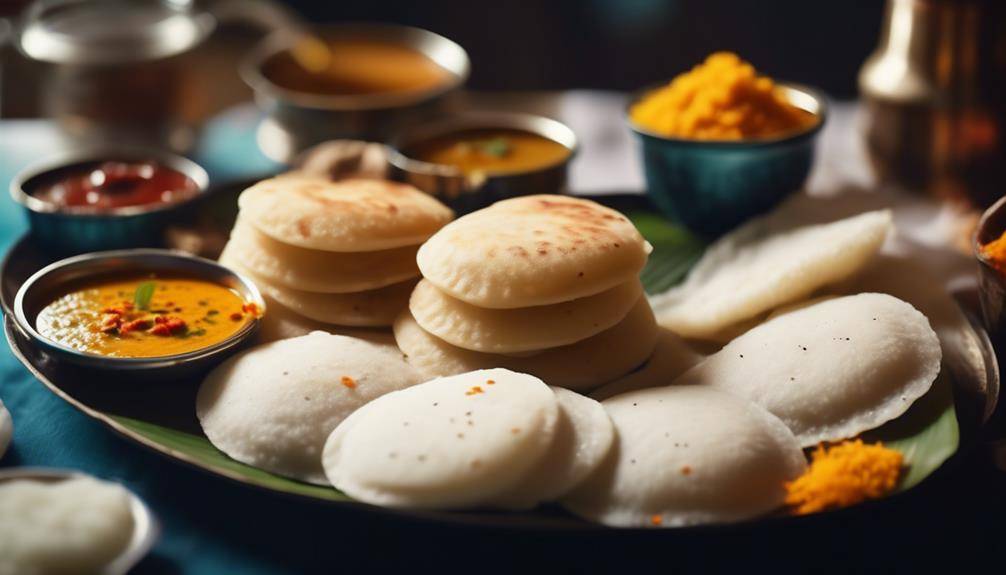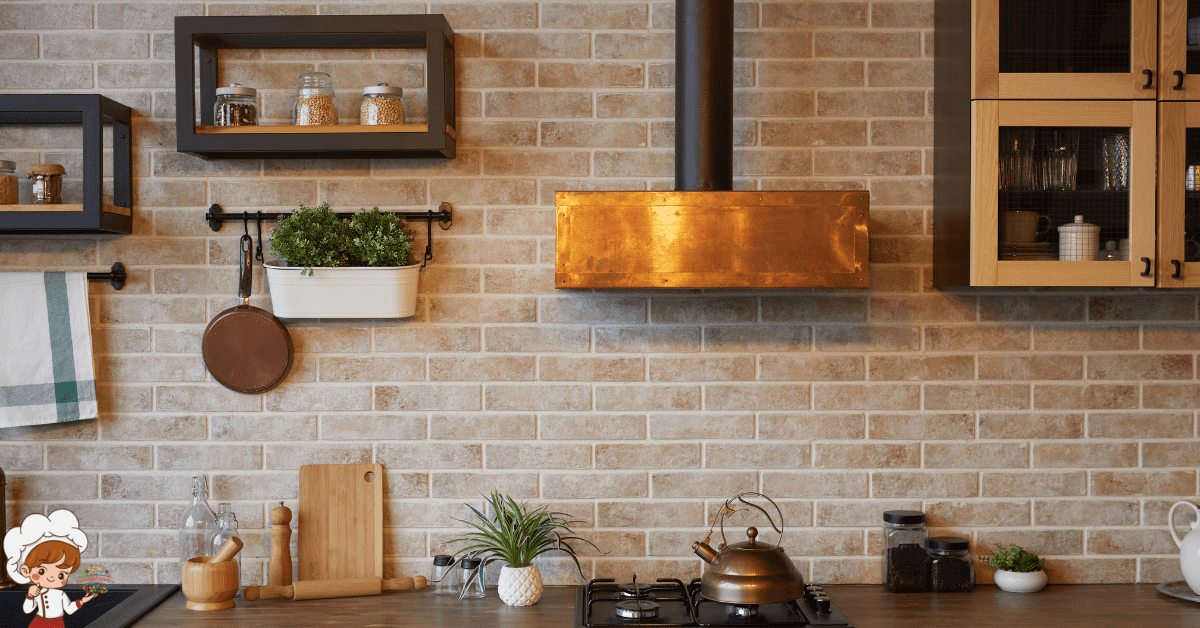The Best French Bistro Cuisine

The Best French Bistro Cuisine; Step into the world of French bistro cuisine, where the culinary scene is a vibrant tapestry of flavors and traditions. Like a hidden gem nestled in the heart of a bustling city, French bistro cuisine beckons you with its rustic charm and tantalizing aromas. But what lies beyond the doors of these charming establishments? What secrets do these kitchens hold, and what treasures await your palate? Get ready to uncover the essence of French bistro cuisine, as we take you on a journey through its rich history, iconic dishes, and the unmistakable allure of the bistro lifestyle.
Origins of Bistro Cuisine
The origins of bistro cuisine can be traced back to the bustling streets of Paris in the 19th century, where a new culinary movement emerged with a focus on hearty, unpretentious dishes served in cozy, neighborhood establishments. French bistro cuisine, with its rustic and comforting flavors, has a rich history deeply rooted in the culture and traditions of France.
The evolution of traditional bistro cooking can be attributed to the influence of regional flavors and specialties on the cuisine. Each region of France has its own distinct culinary identity, and this diversity is reflected in the dishes served in bistros across the country. From the rich and indulgent dishes of the Burgundy region to the fresh seafood of the coastal areas, bistro cuisine celebrates the unique flavors of each region.
One of the defining characteristics of bistro cuisine is its emphasis on simplicity and authenticity. Bistros were originally frequented by the working class, who sought affordable and satisfying meals after a long day’s work. As a result, bistro dishes are often made with humble ingredients and cooked in a straightforward manner. This simplicity allows the flavors of the ingredients to shine through, creating dishes that are both delicious and unpretentious.
Over time, bistro cuisine has evolved to include a wider range of dishes and flavors. While classic dishes like coq au vin and boeuf bourguignon still hold a special place in bistro menus, chefs have also incorporated more modern and innovative techniques into their cooking. This fusion of tradition and innovation has helped to keep bistro cuisine relevant and exciting in the ever-changing culinary landscape.
The Art of French Bistro Cooking
When it comes to the art of French bistro cooking, two key aspects stand out: the authentic flavor profiles and the classic cooking techniques. French bistro cuisine is all about capturing the essence of each ingredient and creating harmonious flavor combinations. From the rich, velvety sauces to the perfectly seared meats, every dish is a testament to the skill and precision of the bistro chef.
Authentic Flavor Profiles
Immerse yourself in the rich and vibrant flavors that define the artistry of French Bistro cooking, where every bite tells a story of passion and culinary excellence. The key to these remarkable flavor profiles lies in the use of authentic techniques and the preparation of traditional dishes.
French Bistro cuisine is renowned for its ability to transport your taste buds to the bustling streets of Paris, with every dish reflecting the deep-rooted culinary traditions of the region. From the classic Coq au Vin, a succulent chicken stew braised in red wine, to the delicate Ratatouille, a medley of vibrant vegetables cooked to perfection, each plate showcases the mastery of the French chefs. The authentic flavor profiles in French Bistro cooking are a testament to the dedication and skill that goes into creating these timeless dishes.
Classic Cooking Techniques
Experience the true essence of French Bistro cooking by exploring the artful techniques that elevate these traditional dishes to culinary masterpieces. Classic cooking techniques are at the heart of the French Bistro cuisine, bringing out the rich flavors and textures that make these dishes so memorable. From the meticulous process of braising to the precise art of roasting, these techniques have been passed down through generations, ensuring that each bite of a traditional French delicacy is a harmonious symphony of taste.
The combination of slow cooking and precise seasoning creates dishes that are tender, flavorful, and simply exquisite. The culinary masters of French Bistro cuisine understand the importance of these classic techniques, as they are the foundation upon which these beloved dishes are built. So, whether it’s a perfectly seared steak or a luscious coq au vin, each bite will transport you to the heart of France, where tradition and technique intertwine to create culinary magic.
Classic French Bistro Dishes
Get ready to indulge in some must-try bistro favorites and traditional French delicacies. From the rich and savory Beef Bourguignon to the creamy and indulgent Escargots de Bourgogne, classic French bistro dishes are known for their bold flavors and comforting appeal. Whether you’re craving a hearty Coq au Vin or a delicate Ratatouille, these iconic dishes are sure to transport your taste buds to the charming streets of Paris.
Must-Try Bistro Favorites
Indulge in the delectable delights of classic French bistro dishes, where each bite transports you to the bustling streets of Paris. From rich and creamy classics to vibrant vegetarian options, the bistro menu has something to satisfy every palate. Here are a few must-try favorites:
- Crème Brûlée: This classic bistro dessert is a creamy custard with a caramelized sugar topping, providing a perfect contrast of textures.
- Ratatouille: A hearty vegetarian option, this traditional Provençal dish combines sautéed vegetables such as eggplant, zucchini, and bell peppers, cooked to perfection in a savory tomato sauce.
- Coq au Vin: This iconic French dish features tender chicken cooked in red wine, mushrooms, onions, and herbs, resulting in a rich and flavorful stew.
- Croque Monsieur: A beloved French sandwich, it consists of ham and Gruyère cheese, served on toasted bread and topped with béchamel sauce, then grilled until golden and bubbly.
These classic bistro favorites are sure to leave you craving for more, offering a taste of authentic French cuisine right at your fingertips.
Traditional French Delicacies
What makes traditional French delicacies so irresistible? It’s the perfect combination of exquisite flavors, meticulous preparation, and a rich culinary heritage. When it comes to traditional French pastries, you simply cannot resist the buttery croissants, flaky pain au chocolat, or the delicate macarons. These pastries are a testament to the French mastery of baking, with their light and airy textures that melt in your mouth. And let’s not forget about the famous French cheese.
From the creamy and indulgent Camembert to the sharp and tangy Roquefort, there is a cheese to suit every palate. Each bite tells a story of the French countryside, where centuries-old traditions have been passed down through generations. Traditional French delicacies are not just food; they are a celebration of the artistry, passion, and pride that goes into every dish. So go ahead, indulge in these timeless delights and experience the magic of French cuisine.
Regional Flavors and Specialties
Have you ever wondered about the unique flavors and specialties that define the different regions of French bistro cuisine? From the sun-soaked Provence to the snowy peaks of the Alps, each region boasts its own culinary treasures that reflect its local culture and traditions. French cuisine is renowned for its emphasis on quality ingredients and meticulous preparation, and the regional flavors and specialties are no exception. Here are some of the highlights:
- Burgundy: Known for its rich and flavorful dishes, Burgundy is famous for its Coq au Vin, a classic dish of chicken cooked in red wine. The region’s Pinot Noir wines perfectly complement the deep, earthy flavors of the dish, creating a harmonious balance on the palate.
- Brittany: Nestled on the rugged coastline, Brittany is celebrated for its seafood delicacies. The region’s signature dish, Moules Marinières, showcases plump mussels cooked in a savory broth of white wine, shallots, and butter. Pair it with a crisp Muscadet wine for a refreshing and briny experience.
- Alsace: Located in northeastern France, Alsace combines French and German influences in its cuisine. One of its standout dishes is Choucroute Garnie, a hearty platter of sauerkraut, sausages, and smoked meats. A glass of Gewürztraminer or Riesling complements the robust flavors of the dish, highlighting its complexity.
- Provence: With its Mediterranean climate, Provence is a treasure trove of vibrant flavors. Ratatouille, a vegetable stew bursting with sun-ripened tomatoes, eggplant, and zucchini, is a perfect representation of the region’s rustic charm. Enjoy it with a glass of refreshing rosé wine for a delightful summer pairing.
While these regional specialties have stood the test of time, many French bistro chefs also incorporate modern twists to keep their menus fresh and exciting. Whether it’s a playful reinterpretation of a classic dish or the fusion of different regional flavors, these innovative approaches add a contemporary flair to traditional French cuisine. So, next time you visit a French bistro, don’t hesitate to explore the regional flavors and specialties, and indulge in the culinary delights that each region has to offer.
Ingredients That Define Bistro Cuisine
When it comes to bistro cuisine, the ingredients used play a vital role in defining the distinct flavors and characteristics of this beloved culinary style. Bistro cuisine is all about celebrating the regional ingredients and incorporating them into dishes that showcase their natural flavors. From the fresh seafood of the coastal regions to the hearty meats and cheeses of the countryside, bistro cuisine highlights the best that each region has to offer.
Traditional cooking techniques also contribute to the unique flavors of bistro cuisine. Slow braising, roasting, and stewing are commonly used methods that enhance the taste and tenderness of the ingredients. These techniques allow the flavors to develop and meld together, creating rich and aromatic dishes that are the hallmark of bistro cuisine.
One of the defining ingredients in bistro cuisine is the humble potato. Whether it’s thinly sliced and fried to make crispy pommes frites or simmered in a creamy gratin, potatoes are a staple in many bistro dishes. They add a comforting and satisfying element to the meal, complementing the other flavors on the plate.
Another key ingredient in bistro cuisine is butter. French butter is known for its rich and creamy texture, and it is used generously in bistro cooking. From sautéing vegetables to finishing sauces, butter adds a luxurious richness and depth of flavor to the dishes.
The Role of Wine in Bistro Dining
Wine plays a pivotal role in bistro dining, enhancing the flavors of the dishes and elevating the overall dining experience. The wine pairing experience is a fundamental aspect of bistro culture, where the right wine can complement and accentuate the flavors of each dish. Here are a few reasons why wine holds such importance in the bistro dining experience:
- Enhancing flavors: Wine has the ability to enhance the flavors of the dishes it is paired with. The acidity and tannins in red wine can balance the richness of a hearty beef stew, while a crisp, dry white wine can cut through the creaminess of a buttery seafood dish.
- Creating a sensory journey: The influence of wine on bistro culture goes beyond taste. The aromas and textures of wine can create a sensory journey, taking you on a delightful adventure with each sip. From the fruity notes of a bold red to the floral undertones of a crisp white, wine adds an extra layer to the dining experience.
- Cultural significance: Wine has been an integral part of French culture for centuries, and bistro dining is no exception. The influence of wine on bistro culture is deeply rooted in tradition and showcases the rich history of winemaking in France. It is an opportunity to savor the regional flavors and appreciate the craftsmanship that goes into each bottle.
- Fostering social connections: Sharing a bottle of wine with friends or loved ones is a cherished part of bistro dining. The act of pouring and savoring wine together fosters social connections and creates a convivial atmosphere. It encourages conversation, laughter, and the sharing of stories, making the dining experience even more memorable.
Embracing the Bistro Lifestyle
Immerse yourself in the vibrant atmosphere and culinary delights of the bistro lifestyle, where every meal is a celebration of French gastronomy. Embracing the bistro culture means indulging in the rich and diverse flavors of French cuisine, while also immersing yourself in the warm and inviting ambiance that characterizes these establishments.
One of the key elements of embracing the bistro lifestyle is appreciating the bistro-inspired decor. As you step into a traditional French bistro, you are greeted by charming and cozy interiors that exude a sense of nostalgia and authenticity. The rustic wooden furniture, the checkered tablecloths, and the vintage posters adorning the walls all contribute to the unique atmosphere that sets bistro dining apart. These elements create a welcoming space that encourages leisurely enjoyment of good food and company.
The bistro lifestyle also encourages a slower pace of dining, allowing you to savor each bite and truly appreciate the flavors and textures of your meal. Unlike the hurried nature of modern dining, bistro culture embraces the concept of taking time to enjoy your food and the company of your dining companions. It is a lifestyle that encourages conversation, laughter, and a sense of camaraderie.
Furthermore, embracing the bistro lifestyle means embracing the idea of indulgence. Bistros are known for their hearty and indulgent dishes, such as coq au vin and beef bourguignon, which are designed to satisfy both the palate and the soul. It is a celebration of the simple pleasures in life, where food takes center stage and brings people together.
Frequently Asked Questions: The Best French Bistro Cuisine
What Are Some Popular French Bistro Dishes That Are Not Mentioned in the Article?
You’ll find plenty of popular French bistro dishes that aren’t mentioned in the article. From savory coq au vin to delicate bouillabaisse, there are many delectable options to choose from. Don’t forget about vegetarian options like ratatouille and mushroom quiche!
Are There Any Vegetarian or Vegan Options Available in French Bistro Cuisine?
Exploring vegetarian and vegan options in French bistro cuisine can be a delightful adventure. From roasted vegetable tarts to ratatouille, there are plenty of flavorful dishes to satisfy your plant-based cravings. Recreate the experience at home with these tips.
Can You Provide Some Tips on How to Recreate the French Bistro Experience at Home?
To recreate the French bistro experience at home, here are some tips: create an intimate ambiance with dim lighting, play French music, use rustic tableware, serve classic dishes like coq au vin, and sip on a glass of red wine.
Are There Any Specific Rules or Etiquette to Follow When Dining at a French Bistro?
When dining at a French bistro, it’s important to follow certain rules and etiquette. The experience is all about immersing yourself in the French bistro dining experience, with its unique decor and ambiance.
What Are Some Unique Characteristics of French Bistro Desserts That Set Them Apart From Other Cuisines?
French bistro desserts have unique characteristics that set them apart from other cuisines. The flavors are rich and decadent, yet there is a simplicity and elegance to the presentation. They often use seasonal ingredients, emphasizing quality.
Conclusion
In conclusion, French bistro cuisine is a delightful and flavorful culinary experience that immerses you in the rich history and traditions of French cooking. From the origins of bistro cuisine to the art of French bistro cooking, this article has provided a glimpse into the world of classic French bistro dishes and regional specialties. The ingredients used in bistro cuisine play a vital role in creating the unique and delicious flavors that define this style of cooking. And of course, no bistro dining experience would be complete without a perfectly paired glass of wine. Embrace the bistro lifestyle and indulge in the exquisite tastes of French bistro cuisine.








